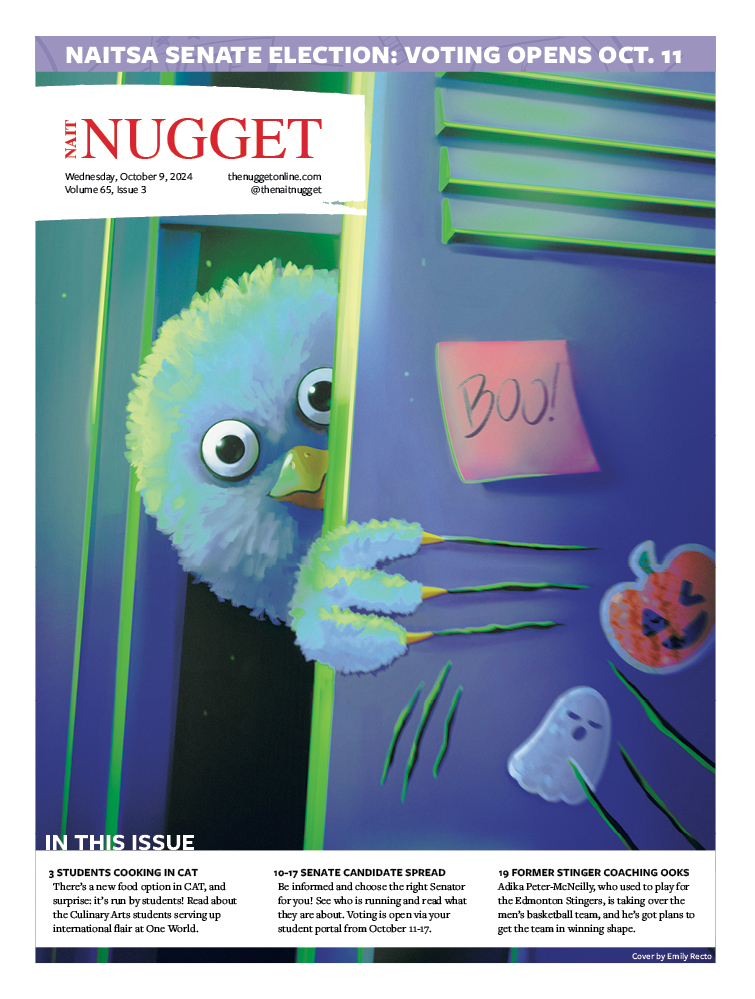By Sara Gouda
Studies show stress is a common feeling among 90% of university students. The National Union of Students states the main three sources of stress include: meeting school deadlines, balancing schoolwork with other commitments and studying for exams.
Joshua Hawrelak is a Radio and television student at NAIT. He says he will resort to various forms of consumption when dealing with his stress.
“Drinking and smoking weed is how I deal with stress. Occasionally, I also stress eat,” said Hawrelak.
Another student, Michael Yurchak, believes that good entertainment and a pack of gum are all you need to help reduce stress.
“Before a test, if I’m stressed, I’ll watch funny videos to clear my mind and chew gum,” said Yurchak when asked to describe his stress coping methods.
“If students aren’t stressed, they’re not taking it seriously. They aren’t worried about the outcome which is a bad characteristic to have,” he added.
Yurchak also stated that he has the constant support of friends and family, which he finds to be a great help when dealing with stress.
Alyssa Buzenus, another student at NAIT admits she is clinically diagnosed with obsessive-compulsive disorder. She disagrees with Yurchak’s claims.
“The effects of stress are simply lower performance. The more you stress, the less positive your outcome. Sure, you might get a good grade. But in the long run stress can have many detrimental effects on your health,” Buzenus said.
When the stress becomes more than she can handle, she says she can resort to prescriptions given to her by her doctor. Knowing that she can reach out to people also helps.
Caren Anderson has been a counselor for 18 years, and with NAIT now for two years. She says stress manifests itself different for each individual.
“Stress can impact us in different ways: it can motivate us to prepare, meet deadlines and be on top. Or it can result in students not sleeping well or feeling certain depression and anxiety,” said Anderson.
She describes a coping mechanism for when students are dealing with stress, an exercise she refers to as the Container method.
“This test…separates negative thoughts so we can focus on the task at hand. [You] put anxiety in a container and visualize it safe in there and contained,” said Anderson.
“There’s no magic answer, no quick fix. Resiliency takes time,” she added.
She describes three types of stress: good, bad, and ugly. She explained how good stress motivates us to prepare, to prioritize and not to procrastinate. It allows us to try things with excitement. The bad stress is day to day stressors that students struggle to control.
She mentioned ugly stress, which are the things that people have no control over. An example of this is if someone is sick, there is no control over the illness, but we can control how to respond.
A good way to find out if you are dealing with stress beyond your capacity is to check if the task at hand motivates or “depletes your emotional bank,” added Anderson.
“When dealing with stress, I think students should ask for help. Instead of feeling we can handle it on our own, know the resources available to you, hence normalizing it,” she said.






